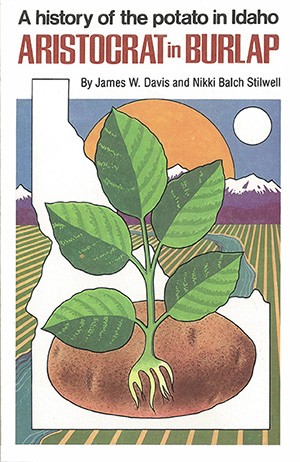RUSSET BURBANK PROMOTED TO INTERNATIONAL FAVORITE BY IDAHO POTATO COMMISSION
A legal agreement was entered into by the state of Idaho, acting by and through the Idaho Agricultural Experimental Station for the University of Idaho, to conduct research activities with regard to mechanical harvesting of potatoes and reducing potato losses. This agreement was legalized in 1948, starting a long and profitable relationship between the University and the Commission, still in existence today.
Two popular items created to advertise Idaho® potatoes were toothpick flags placed in bakers by restaurants and consumer recipe folders. Both items were used in huge quantities. The most memorable was a premium offer of a 30-cent French fry cutter. The Commission's initial manufacture order was for 10,000 cutters in June, 1948. The first promotion was in November, and by December, 19,000 requests for the kitchen devices had been received at the Commission office. Three months later 28,524 requests had been received.
The French fry cutters were so successful the Commission decided to "go it again" during the fiscal year 1949-50, and 32,500 cutters were sent as premiums. But, of the total, almost 10,000 had to be replaced by the manufacturers because of weak wires. Many cards and letters were sent by housewives complaining of breakage, and finally, a cutter was devised that would withstand 200 pounds of pressure.
In December 1951, the threat of price ceilings was a grave concern to the Commission as Idaho® potatoes were bringing well over $1 per hundredweight more than potatoes from other producing areas. A committee was set up to coordinate the efforts of Idaho's fight against price ceilings and was comprised of representatives of the Advertising Commission, the Producers' Association, Cooperatives, the Idaho State Grange, Idaho Farm Bureau, the shippers, and the Idaho Potato Industry Coordinating Committee. C. G. Rice, the dealer serviceman at the time, was sent to Washington, D. C., so he would be available to do what was necessary to fight price ceilings. This issue concerned the Commission until about the middle of 1952 when price ceilings were rolled back.
In 1952, consumer advertising, including space and production, was budgeted at $80,000 and increased $10,000 to $90,000 in 1953. The total advertising budget was $165,000 in 1954, and the consumer-advertising portion was $95,000.


